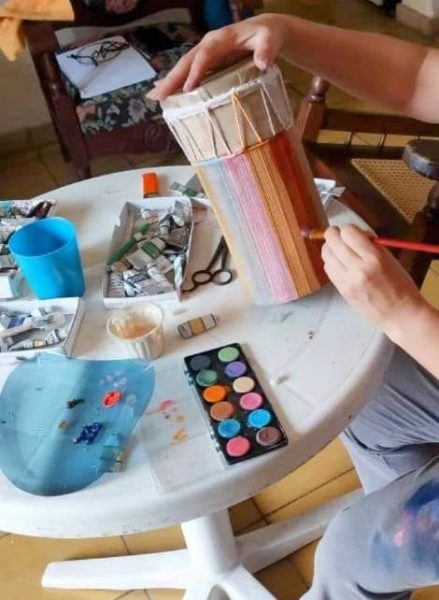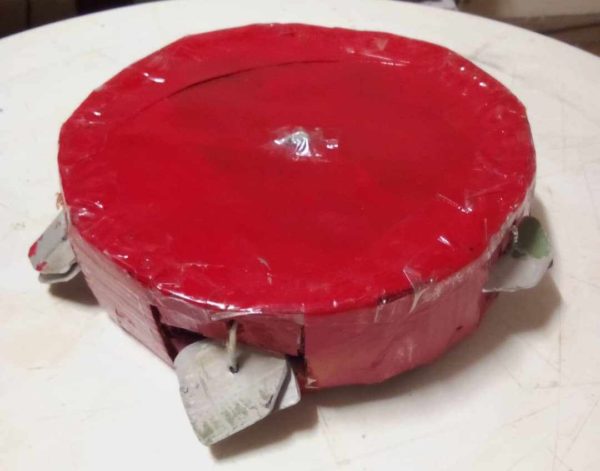Creating: A Safe Passage for Mental Health in Cuba

By Laura Gomez
HAVANA TIMES – Finding mechanisms to overcome anxiety and depression is a challenge in today’s Cuba. Marcia Ocaña discovered herself at the age of fifty building musical instruments to preserve her mental health.
What led you to choose this activity to alleviate your emotional instability?
Marcia Ocaña: I’ve always enjoyed creating. For years I experimented with sculpture and occasionally photography, drawing, and papier-mâché. When wood began to become scarce, I started to feel despondent, then crayons, charcoals, watercolors, and brushes became prohibitively expensive: it was either buy food or the essential materials for my creation. Anxiety was the extension of my inability to express myself. In Cuba, it’s necessary to find a hobby; unfortunately, there are more and more unbalanced people every day, not everyone can endure this imposed way of subsisting.
How did the creative process begin?
For a while, I was depressed, I couldn’t sleep, I couldn’t think of any activity that could meet my need to express myself through my hands. I wandered around the house feeling lost. I didn’t bathe. When I went out, I was depressed by the looks on people’s faces, but I was also depressed by the elderly begging for alms. One night I heard the neighbor across the street strumming the strings of his guitar and then I knew. I would build musical instruments with recyclable materials.

What were your first steps in this discovery?
At that moment, I felt possessed by a flood of ideas. I imagined different instruments and listened to their sounds. The first one I visualized was the tambourine. I imagined that I could easily obtain the materials except for the piece that would make the indeterminate tone. A feeling of freedom overwhelmed me as I thought up possible designs. I replaced the usually wooden hoop with cardboard, which I happened to have available. After several attempts, I managed to make the frame with three layers of cardboard glued with acetate, then I unraveled a woven piece that I would use to finish attaching the jingles to the hole. Then came the biggest challenge: finding the material that would serve as the jingles.
At some point I also tried to make an instrument. I stopped because I wanted to see it finished right away, but I know it takes time.
Creation is enjoyed at all times when you already know the final result. I wasn’t in a hurry, just a joy that made me smile again. The first material I imagined making the function of the jingle were coins, it was a dry, very low sound. Then some colorful beads, finally when I was about to give up my eyes stumbled upon some pieces of aluminum frames that were in the yard, and there were the jingles. I can’t describe the satisfaction I felt when I heard it, but I knew I was on the path to my emotional healing.

Tell me about the other creations
My next project was a flute. In the yard, there were several discarded plastic pipes. I downloaded the videos from the internet on how to make the holes and especially the mouthpiece. I used a hacksaw, file, and a screwdriver. I adjusted the sound while moving the wooden block that acts as the mouthpiece. It was easy. Then I continued with a pan flute, which I built with television antenna rods joined with a cotton fabric. Recently I finished a piece similar to a xylophone in my style. The xylophone is made of bamboo, very small. I picked up the bamboo next to a garbage container.

Have you ever thought about selling your instruments?
I don’t think my instruments can be marketed, they are primitive, rustic. I prefer to give them away. I gave the first flute I made to the neighbor across the street. I listen to it every day, especially at night. Giving life to recyclable materials exposed to the elements is very difficult to explain.
Experiencing the birth of a piece that you are gradually building is unique. It doesn’t matter if the work is rustic, imperfect, what matters is knowing that you can cling to it and that its melody will drive away other worries. The smile of children when they hold it in their hands is priceless.

If it weren’t for your creations, how would you be coping with the situation?
I don’t know, I’ve asked myself that question many times. The reality we live in, the common people, is very sad. The only thing that can save us is to discover strategies to survive and not wait for non-existent empathy.
So, can we say that creation is a means to control anxiety, depression, and improve the quality of life?
Of course. It’s an option. I am convinced that in the current times, all those who can develop their creativity are safe. Building one’s own world without external interference is the merit of a healthy mind, a mind focused on keeping the family safe, only then can we seek our daily bread with dignity.






I am so glad to have read this article. I live in the Highlands of Scotland, a long way from Cuba, but up here where the population is about 250,000 with many outlying and isolated areas, mental health is a huge problem, with a lot of drugs and alcohol on the increase
Reading this article about the way in which Marcia Ocaña took it upon herself to help herself through her difficulties, shows so much courage and determination to seek a way forward to a better state of mental health.
I have visited Cuba many times and stood back in admiration at the Cuban people. I will not post any political views here, it is not necessary, but suffice to say that seeing people coping in challenging situations, humbles me enormously.
Up here in the Highlands of Scotland, there are many positive affirmations and help for those who are in need of support. ‘ITS OK NOT TO BE OK’ is a saying I see written on posters everywhere in my local area.
I wish Marcia well and love her musical instruments.